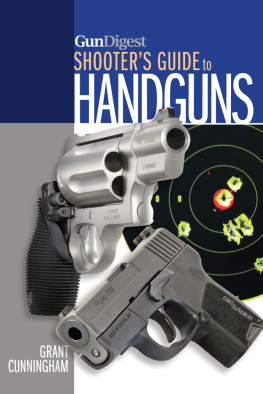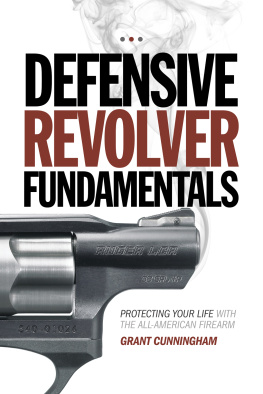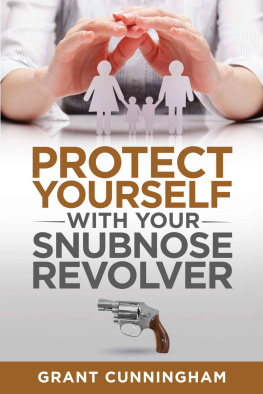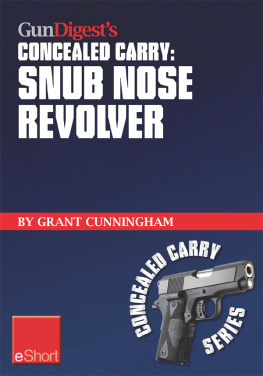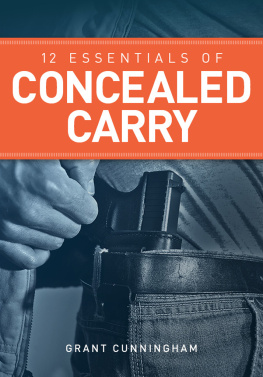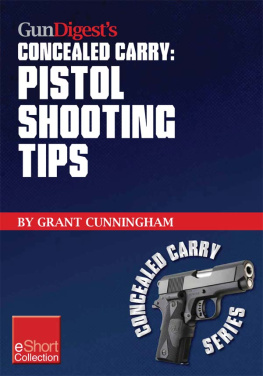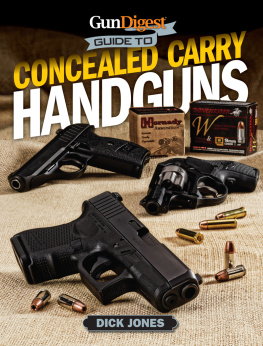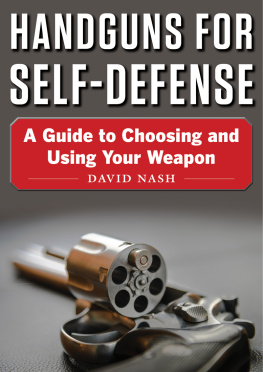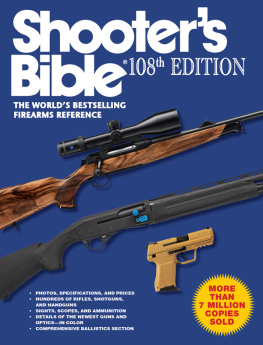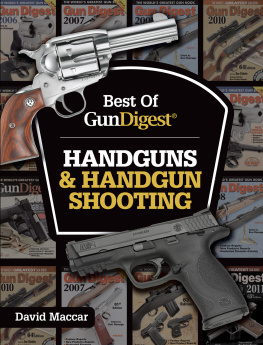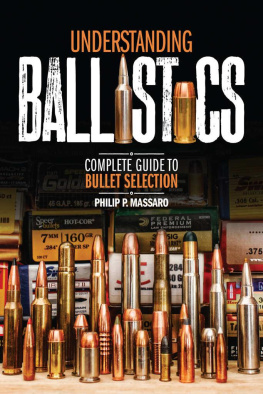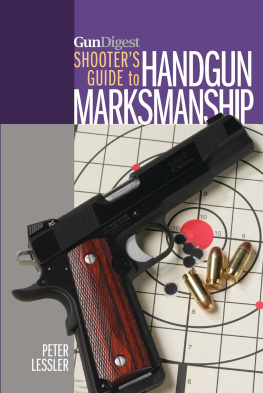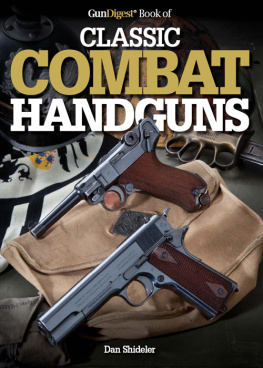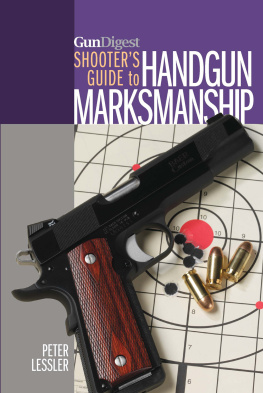M any people and organizations contributed time, energy, and pictures to this book.
Thanks much to Todd Koonce at Koonce Custom Guns, who supplied some of the guns and ammo pictured, and even posed for a couple of the photos. He came through with things that I couldnt find anywhere else!
Jacq Shellito and Brenden Shellito were kind enough to pose for pictures on the range and allowed me to set up a few scenes in their home.
Carl Fitts graciously played a couple of parts in the live action pictures, and his son Grant Fitts (what a great first name!) played the kid trying to get the gun out of the closet.
My friend Georges Rahbani also supplied a couple of hard-to-find guns, and posed with them in a number of pictures.
Leroy Merz of Merz Antiques shared his pictures of collectible guns, and came through when others could or would not. Many others went above and beyond the call to locate or produce multiple pictures: engraver Weldon Lister, gunsmith Marc Morganti at Gemini Customs, gripmaker John VanZyck at VZ Grips, antique gun dealer Bob Adams at adamsguns.com, Dick Ruppert at Custom Digital Designs, bullet inventor Tom Burczynski, gunsmith Lou Biondo at Business End Customs, collector Bryan Lester, and Jim Amato.
Finally, my wife served as the model for many of the shots contained here without complaint. She also put up with my manic moods as deadline approached, which is a feat in itself. Thanks, Dear!
CHAPTER 1
SAFETY FIRST!

Before any shooting activity, be sure everyone understands how to safely handle and operate the guns youll be using.
S afety should always be the very first thought in mind when handling a pistol or revolver. There is always an element of danger when handling any firearm, but the risk can be reduced if a few commonsense safety rules are always followed. Whether loaded or unloaded, following these rules is the best way to keep you and everyone around you safe.
1)Always keep the muzzle of the gun pointed in a safe direction.
What is a safe direction? One in which, should the gun fire unintentionally, no one - you or anyone else - will be hurt. From the instant the gun is picked up until it is put down, be aware of where its pointing. Also be aware that the environment will dictate what the safe direction is: in a downstairs apartment, for instance, pointing the gun up (at the other apartments) is not safe; on the top floor, pointing it down is not safe. Its up to you to understand what the safe directions are, and to keep the gun pointed only in those directions.
2) Always keep your finger outside the triggerguard until youre ready to fire.
The only time a finger should enter the triggerguard is when its time to fire. At any other time, the finger should be held in a position that prevents an inadvertent discharge. For handguns, the best place to keep the finger outside of the triggerguard is to extend it on the frame above the trigger. Autoloader or revolver, that position keeps the finger from getting inside the guard and onto the trigger, even if you are tripped or startled.
3) Always remember that you are in control of a tool that, if used negligently or maliciously, can injure or kill you or someone else.
This is the big picture - your understanding that a gun can be dangerous to you and others if you arent consciously thinking about what youre doing. This rule reminds you to think about how the gun is transported, where the bullets will land, if there are any ricochet risks, and all of the many other things that can happen. Youre responsible for every bullet that leaves the barrel of your gun, so make sure that when your gun is handled or fired its done consciously and safely.

No matter what youre shooting, proper hearing protection is a must!

Earplugs are cheap, readily available, store easily, and work well.
PERSONAL SAFETY EQUIPMENT
Dressing appropriately and wearing proper safety equipment is an essential part of shooting safely. The bullet isnt the only thing that can cause injury, and making sure that you have proper personal protection equipment is vital to a safe and enjoyable shooting experience.
Hearing protection is mandatory for any shooting activity. When buying ear protection, look at the Noise Reduction Rating (NRR). The NRR is the amount, in decibels, of attenuation that the product provides; the larger the number, the better.
Foam earplugs are commonly available, cheap, take up almost no space, and provide adequate protection against handgun noise. Theyre also the perfect thing to keep in the car or range bag, to give to guests who dont have their own hearing protection.
Hearing muffs provide better protection than earplugs and have a much longer lifespan. Many people also find them more comfortable than having things stuck in their ears. Most muffs have foam earcups, but for the most comfortable fit around the ear - and the best sealing against noise - look for muffs with gel earcups. Gel earcups can substantially increase the noise protection offered by any set of muffs.

Protecting your vision is vitally important, and specialized shooting glasses like these from Rudy Project do just that. Photo courtesy of Rudy Project USA

Some earmuffs come with very soft, form-fitting gel ear cups, which are more comfortable and do a better job of sealing against noise.
Electronic muffs allow you to hear whats going on around you, while still allowing you to shoot in comfort and safety. Theyre almost a necessity for taking any sort of shooting class, as they allow you to hear the instructors commands clearly. Many people find them handy for hunting too, because their sensitivity can be turned up to hear game moving in the area. Electronic muffs usually have less noise reduction capability than conventional muffs.
Remember that indoor ranges require more noise reduction than outdoor ranges; many people double up - use foam plugs along with muffs - for maximum protection when shooting indoors.

